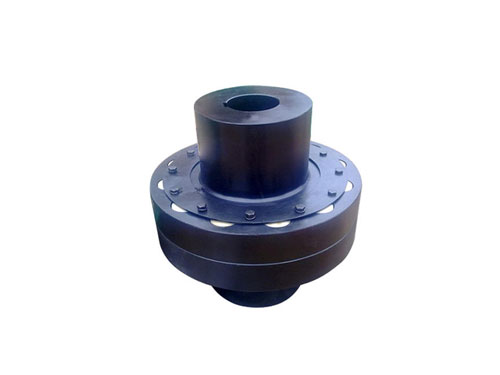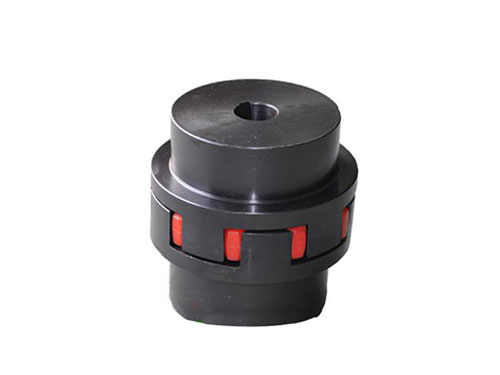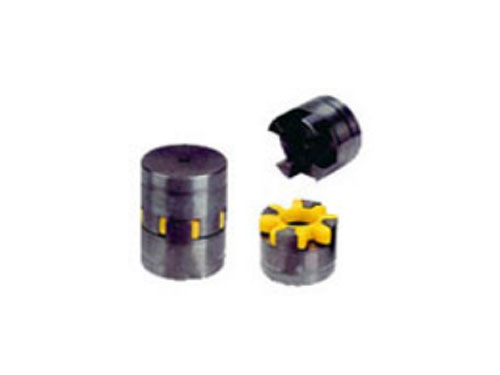 TB type HG5-251-69 standard rackThe standard frame of TB type HG5-251-69 is "glass-lined...
TB type HG5-251-69 standard rackThe standard frame of TB type HG5-251-69 is "glass-lined... HL nylon rod pin couplingHL nylon rod pin coupling has good toughness...
HL nylon rod pin couplingHL nylon rod pin coupling has good toughness... XL connection middle sleeve type star elastic couplingXL connection middle sleeve type star elastic coupling...
XL connection middle sleeve type star elastic couplingXL connection middle sleeve type star elastic coupling... Clamping spline plum blossom elastic couplingClamping spline plum blossom elastic coupling...
Clamping spline plum blossom elastic couplingClamping spline plum blossom elastic coupling... LXD type single flange star elastic couplingLXD type single flange star elastic coupling is...
LXD type single flange star elastic couplingLXD type single flange star elastic coupling is...Operation problems of diaphragm coupling
Due to various reasons, the center of mass or inertial principal axis of the diaphragm coupling does not coincide with the axis of rotation, and the phenomenon of unbalanced centrifugal inertial force, centrifugal inertial couple force and dynamic deflection (vibration shape) will occur during operation, which is called the phenomenon of rotor Unbalance phenomenon, this kind of unbalance phenomenon will inevitably cause the vibration of the shaft system, thereby affecting the normal operation and service life of the machine, so it is important to pay attention to it.The degree of unbalance (unbalance U) is usually expressed by the product mr of the mass m of the rotor and the distance r from the center of mass to the axis of rotation of the rotor, which is called the product of mass diameter.It is also expressed by the product of mass diameter per unit mass, called eccentricity e (not geometrically eccentric.) The product of mass diameter mr is a relative quantity related to the mass of the rotor, while the eccentricity e is a value that has nothing to do with the mass of the rotor.的量。 The amount.The former is relatively intuitive and is often used for specific balancing operations of a given rotor. The latter is used to measure the pros and cons of the rotor balance or to check the balance accuracy. The balance grade standard of the diaphragm coupling is evaluated by e.For a flexible rotor, use the mode eccentricity (the nth mode) en=Un/mn, where Un and mn are the nth mode and the first mode quality respectively.
In general, the coupling and shaft connection are driven by keys, and the keys are all national standard.The motor shaft and the coupling can be axially fixed with transitional fit or tight fit.Axial fixation can be used to drive the coupling to the shoulder of the motor shaft or use a set screw to fix it. Simply put: there are two methods, some are tapping holes on the half coupling and adding positioning screws; and some are Positioning by interference fit is a large-scale rotating equipment, which has high requirements for interference control.Here is a list for your reference:
XNUMX. Keyway type: This type is the same as the fastening bolt type. It is an old-fashioned fixing method and is suitable for transmission with relatively good torque.In order to prevent axial movement, it is usually used together with the fastening bolt type and the clamping type.
1095. Keyway type (DJM diaphragm elastic coupling): The key width and keyway are specified by the national standard GB/T2003-XNUMX, and there are three different tolerance ranges for loose key connection, general key connection, and tighter key connection. The transmission suitable for high torque can be selected. In order to prevent axial sliding, it is usually used together with set screw fixation and clamping screw fixation.
XNUMX. Semi-separable type: One side of this type is a clamping type bushing, and the other side is a separate type bushing.First fix one side of the shaft in the clamping shaft sleeve, and then install the shaft of the device end in the separate shaft sleeve.
XNUMX. Expansion sleeve (ZJM expansion sleeve is connected with single diaphragm coupling): The tent set is compressed and fixed by tightening the four positioning screws on the end of the coupling. It is suitable for some stepping motors and servo motors with large torque. The connection is fixed, such as expansion sleeve diaphragm coupling, expansion sleeve plum blossom coupling, expansion sleeve bellows coupling, etc.
90. Set screws: The two set screws have a gap of XNUMX° to lock the fixed shaft. The old-fashioned fixing method, because the front end of the screw contacts the shaft, may cause damage to the shaft of the coupling or difficulty in disassembly.
XNUMX. Fastening bolt shape: This low-cost type is a conservative fixing method.However, the front end of the bolt is in direct contact with the shaft, which may cause damage to the shaft or difficulty in disassembly.
XNUMX. Clamping type: Use the tightening force of countersunk bolts to shrink the gap and clamp the shaft tightly.It is convenient to fix and disassemble, and will not cause the loss of the shaft.
XNUMX. Clamping screw: Utilize the tightening force of the hexagon socket bolt to shrink the slit and clamp the shaft tightly.This method is convenient to fix and disassemble, and will not cause damage to the shaft, so it is a very common fixing method.
Nine. Separate type: The characteristic of the separate type is that it has a fully separated shaft sleeve.It can be fixed and disassembled conveniently without moving your device.
XNUMX. D-shaped hole pattern: Usually, if the shaft of the motor is D-shaped, if the positioning screw cannot be fixed, the hole of the coupling can be processed into a D-shaped hole corresponding to the size of the motor shaft, and coordinated positioning The screws are fixed, so there is no need to worry about slipping.
The essentials for the selection of diaphragm coupling:
XNUMX. Allowable deflection angle-the allowable value of the mutual angle formed between the two shafts.
XNUMX. Allowable axial deviation-the allowable value of the displacement of the axial movement of the two axes.
XNUMX. Allowable rated torque-is the allowable value of the torque that the diaphragm coupling bears during actual use.
XNUMX. Allowable high torque-is the critical value for the damage of the diaphragm coupling during use.
XNUMX. Allowable eccentricity-the allowable value of the parallel deviation of the axis of the two shafts.
The diaphragm coupling bolt connection does not need to be threaded on the connecting piece, the use is not restricted by the connecting piece, the structure is simple, and the disassembly and assembly are convenient.Stud bolts can be used in occasions where bolts cannot be used due to structural restrictions, but a compact connection structure is required.The bolt connection does not have a nut and has a smooth exposed surface, but it is not suitable for frequent disassembly and connection to avoid damage to the threaded hole.
During the service life of the diaphragm coupling, it is necessary to maintain the wedge-shaped clearance surfaces that are inclined to each other, add lubricating oil, and exit from the large port into the small port.The two surfaces have sufficient relative movement speed, the fluid has sufficient viscosity, and sufficient oil is required.In the maintenance process, it is important to grasp the basic scope of hydrodynamic lubrication, which is also the theoretical basis of sliding bearing design.
The diaphragm coupling can actively compensate the axial, radial and angular offset caused by the motor, as well as the influence caused by factors such as manufacturing error, installation error, bearing deformation and temperature rise.Diaphragm coupling is a metal elastic element in flexible coupling. The advantages of driven torque transmission, elastic vibration, no noise, and no lubrication are the ideal products to replace gear couplings and general couplings.
Next:Nothing